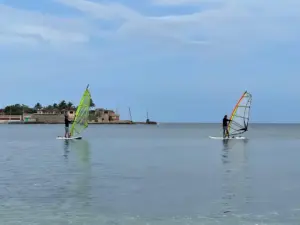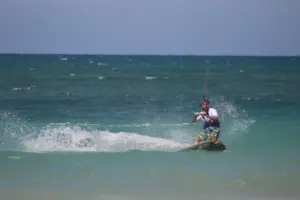Cuba, a tropical paradise known for its vibrant culture, stunning beaches, and rich history, offers much more than just the usual tourist attractions. Along its pristine shores, a thrilling water sport takes center stage: windsurfing.
Imagine clear waters that shimmer like liquid crystal, unswerving trade winds that playfully tousle your hair, and a coastline that promises adventure at every turn.In this article, we'll dive into the allure of windsurfing in Cuba, from its ideal locations and wind conditions to the equipment needed and the cultural richness that surrounds it.
Top Windsurfing Locations
1. Havanna
Playa La Concha, located in the district Miramar in Havana, is perfect for windsurfing. The winds tend to be strongest in the afternoons, offering exciting rides along the coastline. Playa La Concha is a famous spot for Diving, Surfing, Kitesurf and Stand-Up-Paddle as well. Feel free to contact Cubanture for gear rental and coaches. This place is our favorite for beginner clases.
2. Varadero
Varadero, often hailed as the "Caribbean Pearl," emerges as a windsurfing haven. Its pristine white sands and consistent trade winds set an inviting stage. Varadero's serene waters cater to novices and seasoned windsurfers alike. With multiple windsurfing hubs offering gear rentals and guidance, Varadero retains its appeal for those desiring to embrace the thrill and elegance of this sport.
3. Cayo Guillermo
Now let's set our sights on the enchanting Cayo Guillermo, a true haven for windsurfers in search of calm, shallow waters tailor-made for freestyle maneuvers. The constant trade winds and the placid conditions of this cay form a veritable playground that welcomes windsurfing enthusiasts of all proficiency levels. The beauty of Cayo Guillermo is as much in the surroundings as it is in the thrill of windsurfing itself.
4. Guardalavaca
Let's pivot to Guardalavaca, nestled on the northern coast. A versatile destination where windsurfing opportunities extend to all skill levels. Whether you're taking your first steps on a board or you're a seasoned rider, the varied wind conditions cater to your aspirations. Beyond windsurfing, Guardalavaca unveils another facet of its beauty – stunning coral reefs that beckon underwater adventurers. Snorkeling and diving opportunities abound, adding a whole new layer to your aquatic escapades.
5. Santa Lucía
Santa Lucía, characterized by its white sandy beaches and shallow waters, is a welcoming destination for beginner windsurfers. The gentle wind conditions and serene atmosphere create an inviting environment to learn and practice windsurfing skills.
After a day on the water, you can relax on the beach and take in the tropical ambiance.
6. Jibacoa
Let's take a leisurely trip to Jibacoa, nestled gracefully between Havana and Varadero. Here, calm waters and a relaxed atmosphere beckon. It's the perfect respite for windsurfers seeking a tranquil, unhurried experience. The gentle winds play a soft symphony as you navigate the clear waters. It's a canvas of serenity where you can practice your skills and simply bask in the unspoiled beauty of the coastline. There is no rental spot yet in Jibacoa, so you should bring your gear from Havana or Varadero.
7. Cayo Coco
Cayo Coco, part of the Jardines del Rey archipelago, offers windsurfing amidst paradise-like surroundings. The azure waters, swaying palm trees, and consistent winds create an idyllic setting for windsurfing adventures. Whether you're a beginner or an expert, Cayo Coco's natural beauty and inviting conditions promise an unforgettable experience.
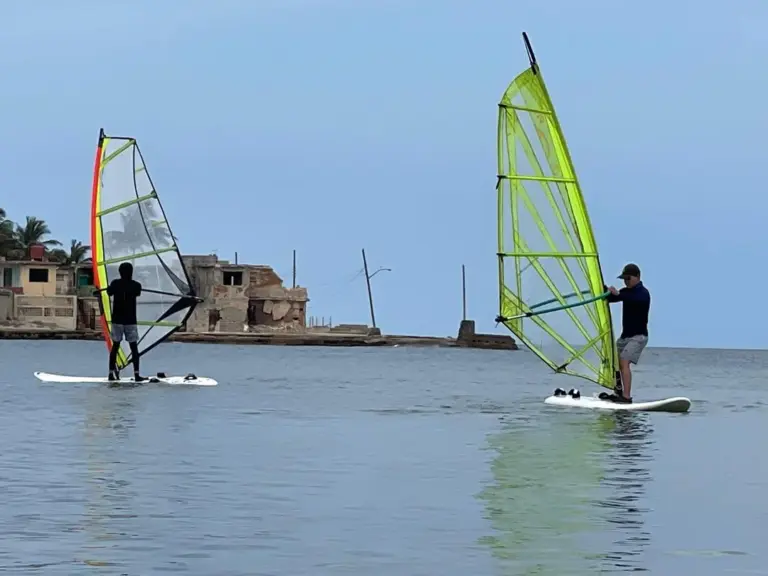
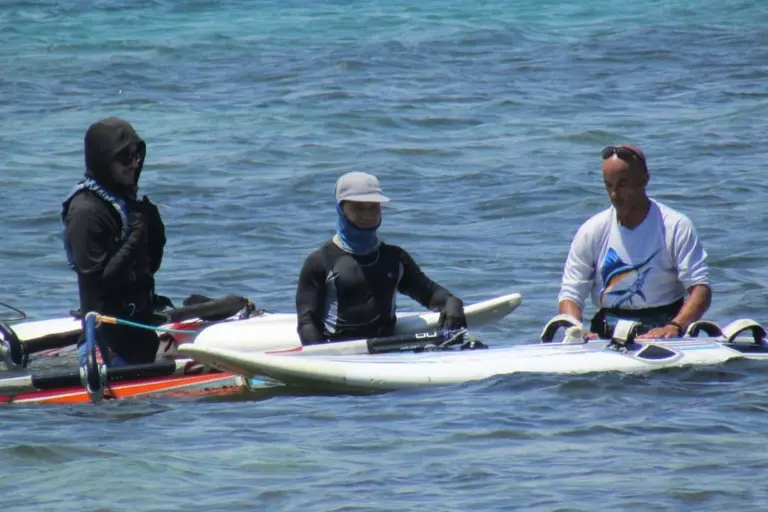
Best Time to do Windsurfing
The best time for windsurfing can vary based on the location, prevailing wind patterns, and the specific conditions you're seeking. In general, the ideal time for windsurfing is when you can enjoy consistent winds, suitable weather, and comfortable water temperatures.
Here are some factors to consider:
Peak Wind Season:
Many popular windsurfing destinations, including Cuba, have a peak wind season when the trade winds are most consistent and reliable. For Cuba, this season typically runs from November to April, with December to February being particularly favorable.
During these months, you can expect steady trade winds that create optimal conditions for windsurfing.
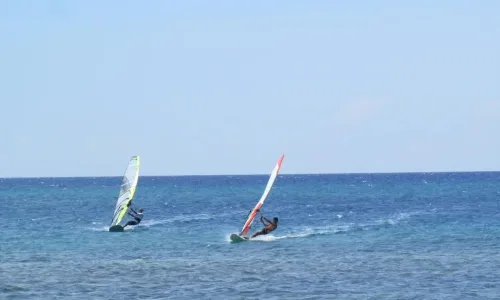
Windsurfing Safety Tips and Precautions:
Windsurfing can be an exhilarating and enjoyable water sport, but like any activity, safety should be a top priority. Here are a few crucial safety tips and precautions:
Types of Equipment
Windsurfing involves two primary components: the board and the sail. Boards come in various sizes and shapes, catering to different skill levels and preferences.
Larger boards provide stability, making them suitable for beginners, while smaller boards are more maneuverable and ideal for advanced riders. Sails also vary in size and design, with larger sails offering more power and smaller sails providing better control in higher winds.
In addition to the windsurfing equipment, you may bring your safety gear to Cuba like life vests and harnesses as most rental spots do not provide these.

Renting vs. Bringing Your Own
When you're traveling light, think about renting gear from local windsurfing centers. In Cuba, many windsurfing spots provide rental services with different board sizes, sail choices, and extras. This is handy if you don't want to carry your own stuff. However, if you're a skilled windsurfer and you're comfortable with your own equipment, bringing your gear guarantees you know what to expect and gives you the best performance on the water.
Frequently asked questions
Absolutely. Cuba's great for windsurfing due to steady trade winds, warm waters, and spots for all skill levels.
From November to April is the top windsurfing season in Cuba when trade winds are reliable. The weather is pleasant, and wind conditions are just right.
While you can bring your gear, most Cuban windsurfing spots have rental centers. They offer equipment for all levels, which is handy if you're traveling light.
Comfortable swimwear, a rash guard for sun protection, and water shoes for your feet. Remember sunscreen and a hat for sun shielding.
Conclusion
Cuba's diverse coastline, constant winds, and warm waters make it a dream spot for new and experienced windsurfers. Whether you're tackling Varadero's waves or gliding on Cayo Guillermo's turquoise waters, Cuba's windsurfing scene blends exciting escapades with Caribbean chill vibes.
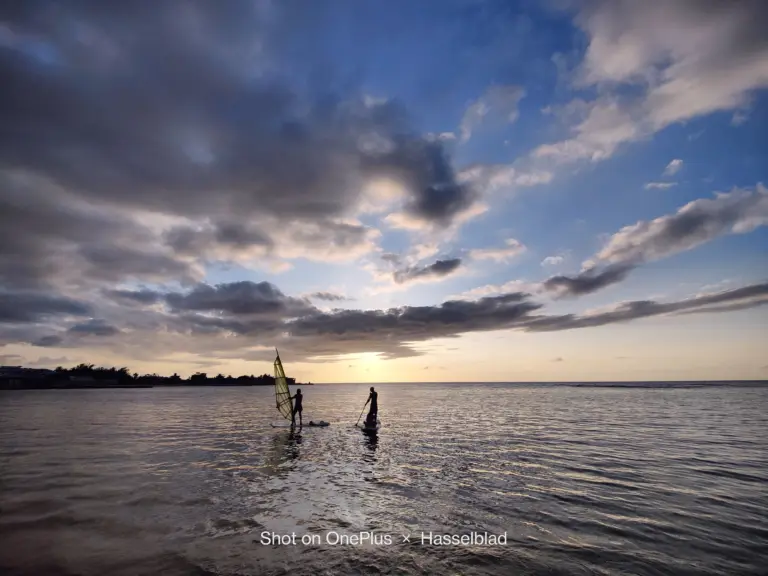
This might also be interesting for you
Surfing In Cuba
Mit seiner fesselnden Geschichte, seinen malerischen Landschaften, seiner lebendigen Kulturszene...
Read moreWindsurfing in Cuba
Kuba, ein tropisches Paradies, das für seine lebendige Kultur, seine...
Read moreKitesurfing in Cuba
Kuba, die Karibikinsel, die für ihre lebendige Geschichte, atemberaubende Landschaften...
Read more
